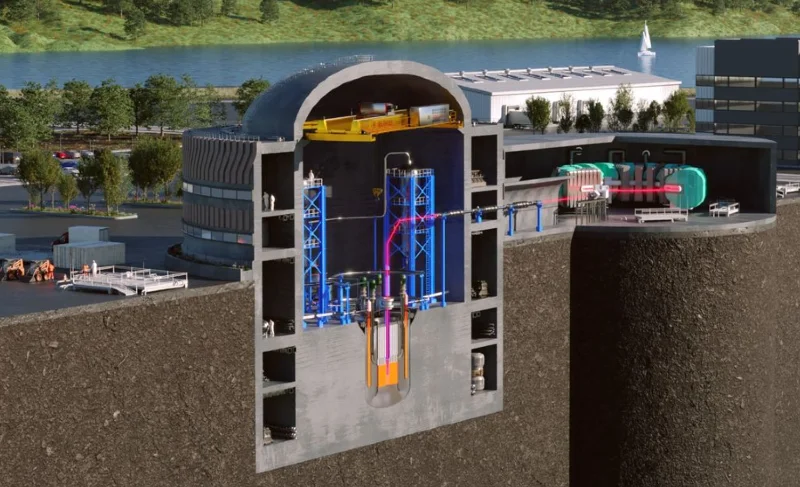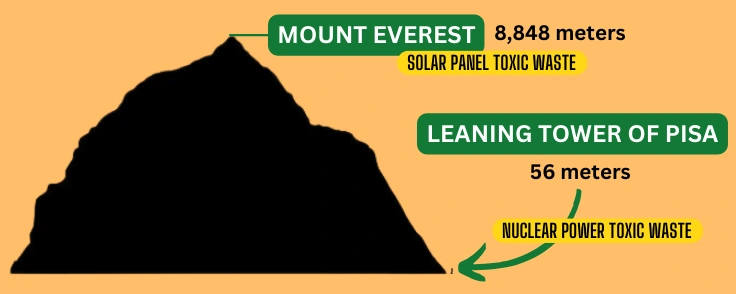In a groundbreaking development, Swiss technology will transform nuclear waste management by drastically reducing its radioactivity. This approach, developed by a former CERN scientist now at Transmutex, promises to cut the radioactivity of nuclear waste by an astounding 80 percent, bringing its hazardous lifespan down from thousands of years to less than 500.
Cutting-Edge Swiss Technology
Transmutex, a private nuclear fission company based in Switzerland, has introduced a pioneering method that has caught the attention of Nagra, the Swiss national body responsible for nuclear waste management. Over several months, Nagra reviewed Transmutex’s technology, confirming its potential to significantly diminish the radioactivity of spent nuclear fuel.
Nuclear fission reactors have long been scrutinized for their operational safety, though the data proves nuclear is among the safest forms of energy creation.
But the enduring radioactivity of spent fuel does remain hazardous for hundreds of thousands of years.
As the world seeks alternatives to fossil fuels, nuclear fission technology is making a comeback. At COP28, 20 nations pledged to triple their nuclear energy capacity in the next 25 years. Despite this ambitious plan, strategies for the long-term storage of nuclear waste are still in development.
The Promise of Transmutex
Transmutex’s groundbreaking technology hinges on the concept of transmutation—the conversion of one element into another, often into a different isotope. This principle, reminiscent of the alchemical quests of the past, has now been realized by modern science.
Carlo Rubbia, the former director-general of CERN, leads this innovative effort. The process involves using a particle accelerator to transmute thorium, a slightly radioactive element, into an isotope of uranium.

This newly generated uranium, unlike the traditional uranium used in current nuclear power plants, does not produce plutonium or other highly radioactive waste. The particle accelerator, integrated with a nuclear fission plant, allows for immediate processing of the generated uranium, significantly reducing the hazardous byproducts of nuclear energy.
Despite its potential, the widespread adoption of Transmutex’s technology faces several hurdles. One major challenge is the cost of building particle accelerators near nuclear plants. The Large Hadron Collider at CERN, for example, cost nearly $5 billion. Replicating such infrastructure at nuclear plants worldwide would require substantial investment.
Beyond the cost, there’s the issue of the public and political opposition to nuclear technology. Countries like Germany have already phased out their nuclear power plants, and Switzerland has similar plans for its four existing facilities. Convincing governments and the public of the benefits of this new technology is rough.
It should be noted that while Germany did jump head-on to popular “green” media darlings, solar and wind, the largest country in Europe has been backpedaling on that choice a bit.
However, Transmutex’s recent successes offer hope. The company has secured private funding and received a significant endorsement from Nagra. According to Nagra, Transmutex’s technology could reduce nuclear waste volume by 80 percent and decrease its radioactivity to less than 500 years. Remarkably, this technology could be applied to 99 percent of existing nuclear waste.
Moreover, a Transmutex-powered nuclear facility boasts an unprecedented safety feature: it can be shut down in just two milliseconds. This rapid shutdown capability represents a significant advancement in nuclear fission technology, enhancing the overall safety of nuclear energy production.
The implications of Transmutex’s technology are profound.
As nations ramp up nuclear energy production to meet climate goals, managing nuclear waste becomes increasingly critical. Finland, for example, plans to store nuclear waste 1,000 feet below sea level for over 100,000 years. Yet, with the adoption of Transmutex’s technology, such long-term storage solutions may become obsolete.
In a world striving for sustainability, innovations like Transmutex’s offer a promising path forward. By significantly reducing the hazardous lifespan of nuclear waste, this technology could make nuclear energy a more viable and eco-friendly option. The journey ahead may be challenging, but the potential rewards are massive.






















